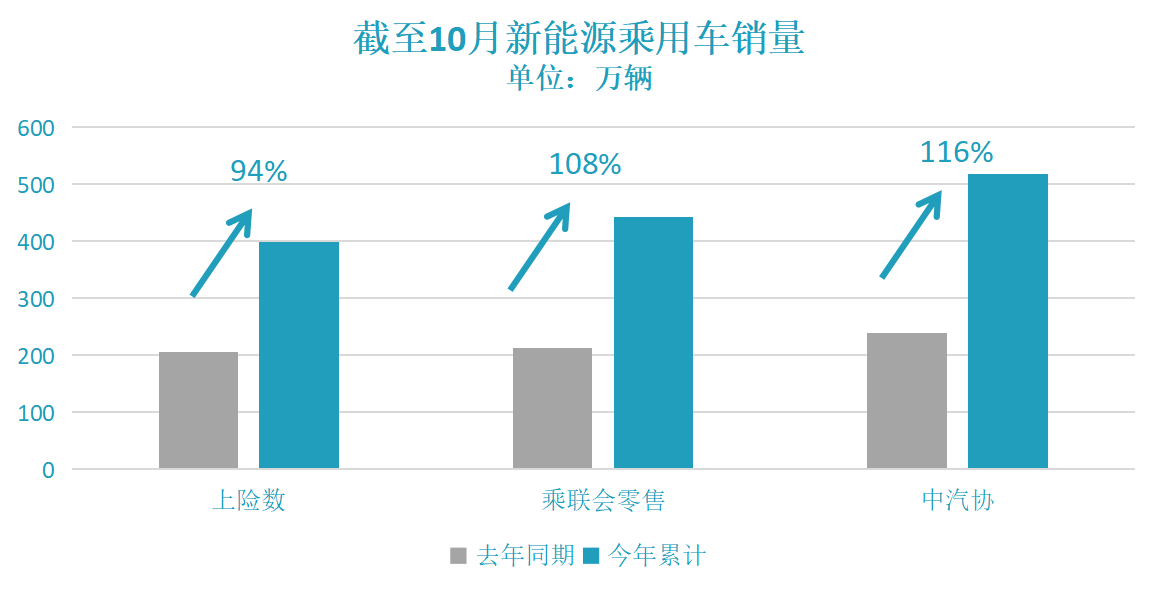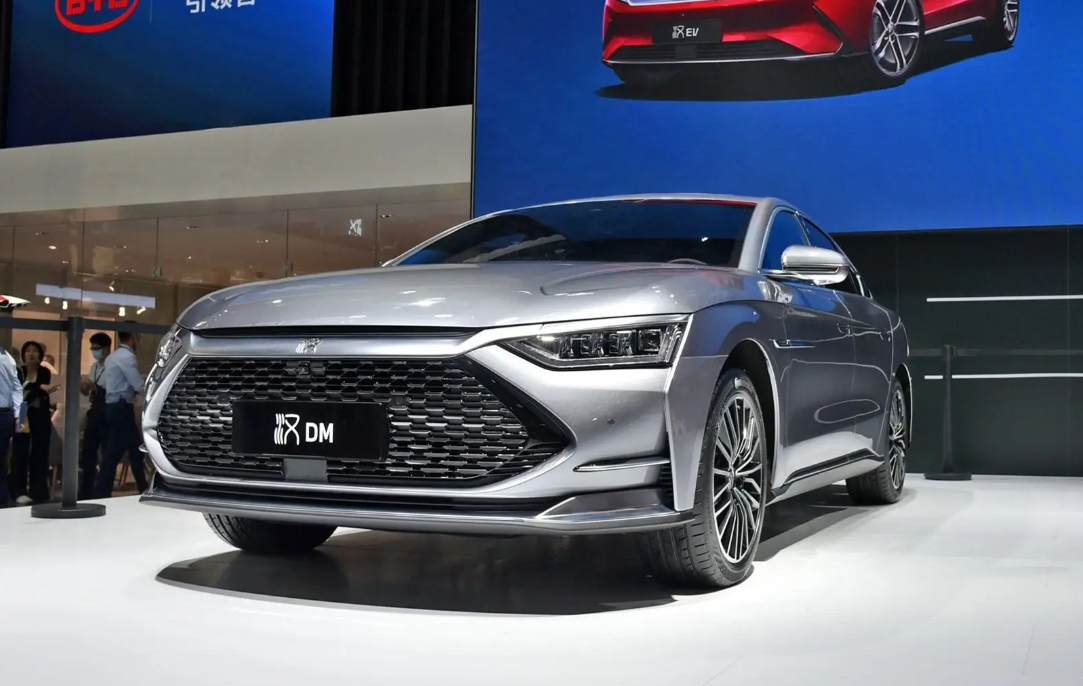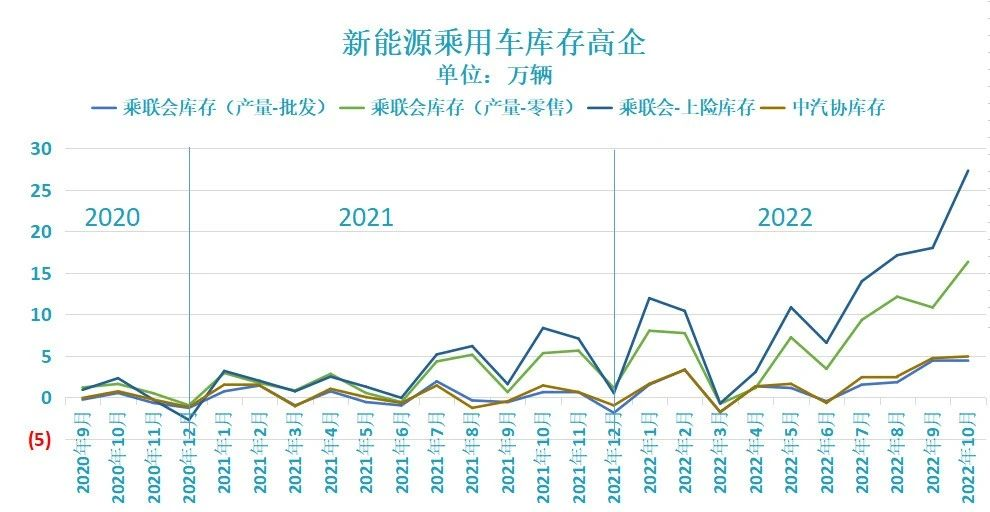Author: Qiu Kaijun
Editor: Qiu Kaijun
On December 3, Beijing once again “moved” with the adjustments of COVID-19 prevention and control policies, many shopping malls in Beijing resumed business. Hopson One, one of the largest shopping malls in Beijing, also opened its doors to customers. There is a new energy vehicle market here, which was once bustling with crowds of people, and many stores were each brand’s best-selling products.
However, due to the first day of opening after epidemic control, there were few people who came to see cars (as shown in the figure).
Due to the epidemic, this market has been closed twice this year, with a total duration of nearly one month. Nevertheless, salespeople of these electric car brands are relatively satisfied with their sales performance this year.
This new energy vehicle market can be said to be a microcosm of the industry- under the shadow of the epidemic, the independent winter of new energy vehicles in 2022 had a unique rise.
2022’s new energy vehicle sales will increase by nearly one time regardless of the calculation method. The sales volume of new energy vehicles in a broad sense may reach 6.5 million vehicles, and the sales volume of new energy passenger cars on the terminal side may reach about 5.2 million vehicles.
High growth in 2022 has become a certainty. However, not everyone is happy. Who is raising their glasses in celebration, and who is sorrowfully upset? More importantly, can new energy vehicles maintain high growth in 2023?
2022: unexpected growth
As of October, data clearly shows that the growth of new energy vehicles in 2022 is still high.
According to the statistics of China Association of Automobile Manufacturers, the sales volume of new energy passenger cars from January to October was 5.184 million vehicles, a year-on-year increase of 116% (note: new energy passenger cars have already occupied the vast majority of the market share, so this article does not discuss the impact of new energy commercial vehicles);
According to the statistics of the China Passenger Car Association, the domestic retail volume of new energy passenger cars from January to October was 4.432 million vehicles, a year-on-year increase of 107.5%;
The total number of new energy passenger cars insured from January to October also directly reflects the market situation, with 3.9947 million new energy passenger cars insured, an increase of 94% compared with the same period last year.

There are still two months left at the end of the year. As usual, in the last two months, manufacturers hope to enjoy the subsidy policy for the year and usually will advance license plates to boost sales. Therefore, the total sales volume of new energy passenger cars in 2022 will have a significant increase from the cumulative total in the first ten months.The market performance in 2022 is better than most people expected at the beginning of the year.
China Association of Automobile Manufacturers (CAAM) predicted that the sales volume of new energy vehicles (including new energy commercial vehicles) would be 5 million at the beginning of the year. Now, it seems that the sales volume of new energy vehicles under CAAM’s caliber may reach 6.5 million.
China Passenger Car Association (CPCA) predicted that the wholesale volume of new energy vehicles in 2022 would be 6 million and the sales volume of new energy passenger vehicles would be 5.5 million at the beginning of the year. CPCA raised this prediction in August, and the sales volume of new energy vehicles was expected to reach 6.5 million.
The prediction by the Electric Vehicle Observer based on the insured vehicles at the beginning of the year was very conservative, at 4.5 million vehicles for 2022. Now, it seems that the number of insured vehicles may exceed 5 million.
Li Jinyong, executive chairman of the Automobile Dealer Association of the All-China Federation of Industry and Commerce and president of the New Energy Automobile Committee, has always used the number of insured vehicles to analyze and predict the market. His prediction for the sales volume of new energy passenger vehicles was around 5 million at the beginning of 2022.
Considering the recent market, he stated that “sales figures in December and November will reach numbers higher than the peak in September, achieving sales volume of nearly 2 million in the fourth quarter. Overall throughout the year, (new energy passenger vehicles) will achieve a terminal sales volume of approximately 5.3 to 5.5 million.” One of the reasons he is optimistic about the sales volume in the last two months is that subsidies are about to expire, which will stimulate consumption.
Zhou Lijun, the dean of the Yiche Research Institute, believes that the significant growth of new energy vehicles this year is in line with expectations from the perspective of research on new energy vehicle users.
She specifically pointed out three groups of people. The first is women who buy a second family commuter, “there is no doubt that electric vehicles are the most suitable. This has promoted the development of micro and small-level electric vehicles suitable for commuting.” The second group is the low-to-medium income group with a car budget of 100,000 to 150,000 yuan, who are extremely sensitive to cost. With BYD’s leadership, PHEVs have surpassed the critical point relative to the total cost of using fuel cars, promoting the development of PHEVs. The third group is new energy MPV models, which have surpassed fuel cars in terms of cost-effectiveness and won the love of middle-aged and high-income people.
“In the past one or two years, from low-end commuting electric vehicles, to mid-level PHEVs, and then to high-end electric MPVs, the structure and consumption characteristics of users behind the market have comprehensively promoted the development of new energy vehicles,” Zhou Lijun said.## Joy and Worry in the New Energy Vehicle Market
The new energy vehicle market is booming, but not everyone is happy.
“Although the sales of new energy vehicles seem to have increased a lot, there are more brands and models. If we exclude a few brands with substantial growth, how much will the rest of the market grow?” said Li Jinyong.

It is predicted that in 2022, the new energy vehicle market will sell 3 million more cars than in 2021. BYD is expected to contribute 1.2 million of these sales, while Geely (including Zeekr and Geometry) is expected to contribute over 200,000. Tesla, Aiways, Geely, Chery, Changan, and Wuling will contribute to over 100,000 new sales, while WM Motor, NIO, Leap Motor, and Volkswagen are expected to contribute around 70,000-80,000 new sales. In addition, Li Auto and Ideal Auto are expected to grow by around 20,000-30,000.
The remaining brands either will not grow or will experience limited growth.
Looking at the brands in different regions, Tesla stands out among foreign and joint venture brands, maintaining strong growth. Among joint venture brands, Volkswagen is the only one with significant sales growth, but its total sales volume is not high, and its customer reputation is poor. Strong brands including Toyota, Honda, Nissan, GM, and Ford have not achieved remarkable results. Among luxury brands, BMW is doing well, and Mercedes-Benz has grown slightly, but overall, the results are inadequate.
Among domestic brands, large state-owned automakers such as FAW, SAIC, Dongfeng, and BAIC have not performed well. Guangzhou Automobile Group (Aiways), Changan, and Chery have shown outstanding performance, especially Guangzhou Automobile Group (Aiways) and Changan, which have emerged as dark horses in the market. Among private brands, BYD is leading alone, Gelly is catching up strongly, and Great Wall Motor has not grown much. Many traditional private brands have declined.
In terms of new car makers, NIO and Leap Motor have maintained rapid growth, but their dealer inventories may be significant. Li Auto and Ideal Auto are maintaining rapid growth, while XPeng Motors has experienced a drop in sales. GAC Aion maintains a certain level of sales with its unique positioning. Meanwhile, companies such as WM Motor, Ai Chi, and Horizon have become increasingly vulnerable.
Overall, few brands have legitimate reasons to celebrate.
2023: Hard to Be Optimistic
By 2022, the market is already settled. What about 2023?
Cui Dongshu, Secretary General of the China Passenger Car Association, has always been optimistic. He predicts that by 2023, new energy vehicle sales may exceed 8.4 million units. The reason is that due to the large price difference between oil and electricity, new energy vehicles have a significant cost advantage. Also, with the help of policies that adjust the national energy structure, the process of new energy vehicle substitution for fuel vehicles is accelerating.But he also mentioned that crude oil prices may experience a significant decline next year, which may have a large suppressive effect on the purchase and use of new energy vehicles. Some car owners who plan to first buy new energy vehicles may turn to purchasing traditional fossil fuel vehicles.
Zhou Lijun, the director of the YiChe Research Institute, predicts optimistically with caution that the sales data of new energy vehicles may reach 6.5 to 7 million units, an increase of around 20% from 2022.
Zhou believes that “the crucial factor for whether new energy vehicles will be popular with users is whether they can substantially reduce costs. If we focus on this point, the replacement of fossil fuel vehicles with new energy vehicles will be an inevitable trend.”
What impact will the COVID-19 pandemic over the past three years have on the new energy vehicle market? He believes that the impact of the pandemic over the past three years is comparable to that of an economic crisis. His research shows that 70% of consumers have been affected by decreased income, 70% have delayed car purchases, and 30% are even considering giving up on buying cars.
For car buyers, he believes that car purchases will be more cautious, and they will choose more economically practical vehicles. From this perspective, models such as short-distance commuter, PHEV, and new energy MPV cars, which already have an overall advantage in cost-effectiveness, will continue to see significant demand. However, the demand for pure electric A and B-class cars is not so optimistic.

Li Jinyong’s prediction is the most pessimistic, as he believes that the new energy vehicle market will only experience a slight or even negative growth throughout 2023.
Regarding the first half of the year, affected by the decrease in subsidies and the rise of battery prices in the first quarter of next year, the sales of new energy vehicles will decline compared to the same period last year. In the second half of the year, if the overall sales of the first half of the year decrease and there is a surplus of batteries resulting in a decreasing cost of electric cars, the growth of new energy vehicles may be restored.
Among these three different predictions, the “Electric Car Observer” leans towards pessimistic predictions.
There are many reasons for this, but we will specifically observe this from the perspective of inventory: the seemingly prosperous new energy vehicle market has already formed a large number of inventories like a “reservoir.” When it breaks through the barriers and discharges, it will cause a huge impact.
“Electric Car Observer” counted the production and sales volume of new energy passenger cars from several data sources. If we subtract the number of newly insured cars from the production volume calculated by the China Association of Automobile Manufacturers (CAAM) to calculate a wider inventory, as of October, China’s auto market has already accumulated a stock of 1.1823 million new energy vehicles this year.
Despite October forming a peak season for inventory over the past two years, with a significant reduction in the last two months, this year has seen an unprecedentedly high accumulation of inventory and the stockpile from Q3 has not been cleared in September as in the past, and the impact of the pandemic has yet to be completely eliminated.
Ultimately, the inventory that can be cleared this year is limited, and even if it is reflected in terminal sales, most of it will be early-batched by distributors and affiliates to help car companies grab subsidies and will actually be consumed as semi-new cars in the first half of 2023.
Under current policies, new energy vehicles will no longer receive subsidies in 2023, which means there will no longer be a year-end rush to receive subsidies. With the two-fold reduction policy at the beginning and end of the year, we believe that new energy vehicle sales in 2023 will be difficult to increase. The number of new energy passenger cars insured by terminals is expected to remain at around 5-5.5 million vehicles, similar to this year.
–END–
This article is a translation by ChatGPT of a Chinese report from 42HOW. If you have any questions about it, please email bd@42how.com.
